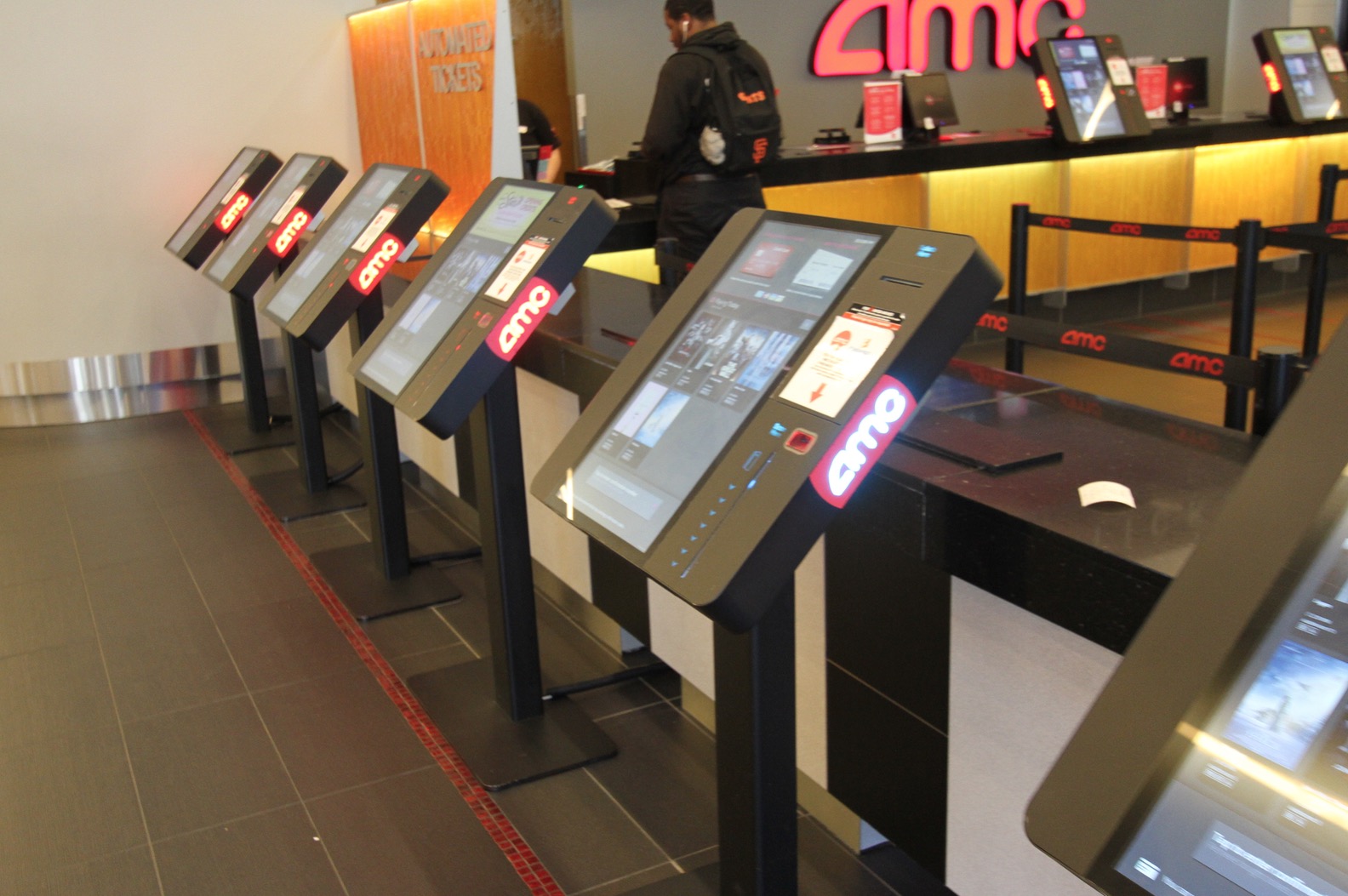
I was on the road a while back and needed to stop to use the facilities. A chain restaurant on the side of the highway seemed like a reasonable spot. As I headed to the men’s room I noticed iPads on all the tables. These are the new electronic menus. They don’t replace wait staff, but they do make the whole process of ordering food more efficient with a likely reduction in the overall number of humans needed to do the same amount of work. And there are all the other benefits that come with data mining and systems optimization. The global supply chain managers must love it.



Here’s a multiplex movie theater with a generous supply of self serve ticketing machines. Swipe your card, touch a few icons on a screen, and presto!


Here’s the automated check out cluster at the big box store. Six or eight self serve machines are now overseen by a single human attendant.

CafeX is beta testing a robotic barista. Here’s where high tech and high touch converge on the masses.





Humans are aggressively being eliminated from as many business models as possible. The early adopters will be the largest companies with the most to gain from improvements in efficiency. Over the next few years we’ll see fewer and fewer people behind the counters. There will always be a need for someone to wipe down the tables, mop the floors, and take out the trash so a few minimum wage level positions will linger on. And there will need to be slightly better trained folks to manage the machines. But the overall level of employment in the service economy will consistently contract.

At the other end of the spectrum I enjoyed lunch at an upscale restaurant. The entree consisted of delicately prepared seasonal wild foraged mushrooms served with local organic mixed greens and “moss” which the attentive wait staff explained was sponge cake infused with pureed parsley. The dish was called The Forest. It was delicious. $80. Spot the difference?


Agriculture was mechanized a century ago and the population migrated away from small farm towns to big industrial cities where factory jobs were plentiful.

Industrial cities crested and then were depopulated as factories were sent elsewhere and people moved on to the suburbs to participate in the post industrial service economy.

We’re now seeing the next wave of creative destruction transforming society. We don’t yet know how it will end. At the moment it looks like people with the skills to create and manage complex systems or build and maintain computer guided equipment will do pretty well. So what about everyone else?


This isn’t a technical problem. It’s a cultural and political conundrum. Americans aren’t big fans of taxing the rich and redistributing the money to the folks lower down the food chain. We tend to think of that as social engineering and Godless communism. My best guess is that we’re not going to resolve these challenges in any intentional comprehensive logical manner. At least not at first. Instead circumstances are going to overwhelm us until enough of the population is miserable enough to demand real change. That’s been the historical model and it tends to be messy. Big fun.
This piece first appeared on Granola Shotgun.
John Sanphillippo lives in San Francisco and blogs about urbanism, adaptation, and resilience at granolashotgun.com. He's a member of the Congress for New Urbanism, films videos for faircompanies.com, and is a regular contributor to Strongtowns.org. He earns his living by buying, renovating, and renting undervalued properties in places that have good long term prospects. He is a graduate of Rutgers University.













Technology vs. People skills
As we observe the emergence of digital technology replacing workers, the focus is usually on the business owner making the change to reduce costs and stay competitive. But there is little discussion about why the customer prefers to use digital technology.
My theory is that (when the technology works right) customers prefer the speed and reliability of the digital interaction rather than dealing with slow, rude or unreliable customer service. Additionally, in the transactional realm (buying a car or applying for a loan) the customer can avoid the uncomfortable and sometimes stressful experience of conflict (negotiation), pressure (sales person), or being judged (being evaluated for a loan.). You will note that in your high-end restaurant example the customer experience is a more agreeable, personalized and positive one and, therefore, digital technology has less influence because it cannot improve upon, and in fact, can detract or dilute the experience.
Just an observation.
much technology shifts work onto customer
it's a nice theory, and it is probably true in some circumstances. I do use the self checkout at Home Depot or at the grocery store, and I do use ATMs. Still, it seems to me that much technology shifts the work from the business to its customers. At the airport recently I stumbled a bit with the machines that print out your boarding pass and baggage tags. Yes, there was someone there to help, but there was a time when it seemed so simple to just check in at a counter. Of course, everyone is familiar with voicemail menus trying to reach someone in customer service. Perhaps this does ultimately result in cheaper fares or other benefits, but customers (particularly some of us older dogs) have to work more than we did when a business's employees would actually help you.